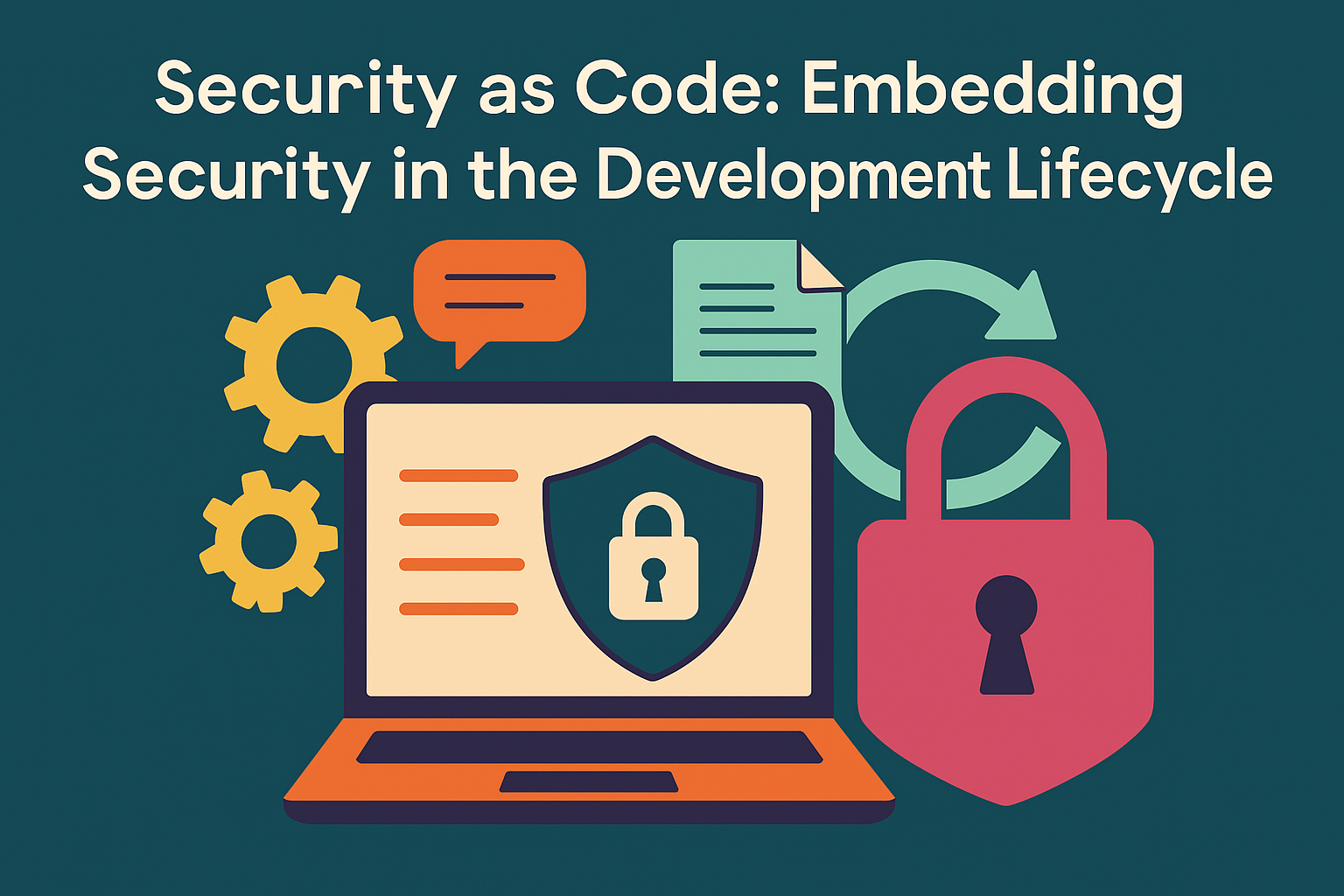Security as Code: Embedding Security in the Development Lifecycle

In an era where digital threats evolve faster than traditional controls can respond, securing software is no longer something we can bolt on at the end. It has to be built in - by design, by default, and by everyone. That’s the promise of Security as Code: to make security a first-class citizen in modern software delivery by treating it not as a gate, but as a continuous, automated, and integrated practice throughout the development lifecycle.
For agile, high-performing engineering teams, this shift is both strategic and essential. Because in a world where speed and resilience go hand-in-hand, security can’t be an afterthought - it must be part of how we write, test, ship, and run code every day.
From Silos to Shared Responsibility
Traditionally, security was handled by a separate team - brought in late to review code, run audits, or approve releases. The result? Bottlenecks, misaligned priorities, and reactive firefighting.
Security as Code challenges this model. It brings security practices into the software development lifecycle from the very beginning, treating them as code-driven, testable, and automatable elements of the system. This approach empowers developers to take ownership of security and enables security teams to become enablers, not blockers.
It shifts the culture from “security is someone else’s job” to “security is part of how we build”.
What Does Security as Code Look Like?
Security as Code applies DevOps principles - automation, version control, repeatability - to security controls. It means writing security policies, configurations, and checks in code, and integrating them into the same pipelines used for application and infrastructure delivery.
Here’s what that looks like in practice:
Infrastructure as Code (IaC) Scanning
Before infrastructure is deployed, it’s scanned for misconfigurations - like open ports, weak IAM roles, or unencrypted storage. Tools like Checkov, tfsec, or AWS Config rules help ensure your environments are secure before they’re live.Static Application Security Testing (SAST)
Code is continuously analysed for known vulnerabilities - unsafe functions, hardcoded secrets, insecure dependencies - within the CI pipeline, not just in isolated pen tests.Dependency Management and SBOMs
Open-source packages are checked against known vulnerabilities (CVEs), and a Software Bill of Materials (SBOM) helps track what’s in your software, making patching and accountability easier.Policy as Code
Security policies (e.g., “no public S3 buckets”, “all secrets must be encrypted”) are codified and enforced automatically. Tools like OPA (Open Policy Agent) and Sentinel make it possible to create custom rules aligned with your risk posture.Automated Threat Modelling and Testing
As part of early design phases, teams use tools to model threats and automate testing for known attack patterns, shifting left on risk identification.Continuous Monitoring and Feedback Loops
Observability and security telemetry are embedded into systems from the start - giving real-time insight into system behaviour and potential threats in production.
Why This Matters for Engineering Teams
Security as Code isn’t just a technical improvement - it changes the relationship between development, operations, and security. It supports high-velocity delivery without compromising assurance. It frees teams from late-stage blockers by catching issues early. And it creates a common language between developers and security engineers - code.
Crucially, it also enables scalability. In large organisations with multiple teams shipping frequently, manual security reviews simply don’t scale. Automation ensures consistency, auditability, and resilience - regardless of team size or pace.
How to Make the Shift
Adopting Security as Code isn’t just about tooling - it’s a cultural and capability transformation. Here’s how to start:
Educate and Empower Developers
Security knowledge shouldn’t live in a silo. Offer hands-on training, secure coding workshops, and just-in-time guidance. Embed security champions within delivery teams to drive awareness and uplift practices.Automate the Basics
Start with quick wins - automated secrets scanning, dependency checking, IaC linting - and gradually expand coverage. The goal is to provide fast feedback without overwhelming teams.Integrate with CI/CD
Security controls should live in the same pipelines that build and deploy your software. Treat failures as you would failing tests - not blockers, but signals for improvement.Collaborate with Security as an Enabler
Position your security team as an enabling function - not just a control point. Co-design policies, build reusable templates, and share context early and often.Measure and Evolve
Track metrics that matter - time to fix vulnerabilities, percentage of automated checks, number of policy violations caught pre-release. Use these insights to target improvements.
The Strategic Payoff
Security as Code doesn’t mean perfect security. But it does mean faster feedback, fewer blind spots, and better alignment between teams. It helps prevent high-risk vulnerabilities from creeping in. It creates trust in your systems - internally and externally. And it gives leadership confidence that security is built-in, not tacked on.
In a world of increasing digital complexity and cyber risk, this shift is no longer optional. It’s a core part of modern engineering excellence.
Because in today’s environment, it’s not the fastest teams that win - it’s the ones who can go fast and stay secure.
Security as Code is how we get there. Let’s build it in.
Engineering leader blending strategy, culture, and craft to build high-performing teams and future-ready platforms. I drive transformation through autonomy, continuous improvement, and data-driven excellence - creating environments where people thrive, innovation flourishes, and outcomes matter. Passionate about empowering others and reshaping engineering for impact at scale. Let’s build better, together.
